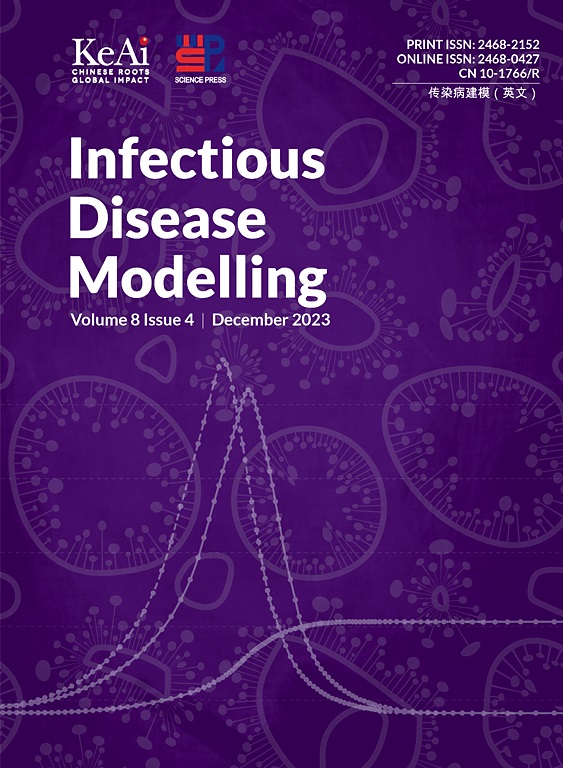A discrete SIR epidemic model incorporating media impact, resource limitaions and threshold switching strategies
IF 2.5
3区 医学
Q1 Medicine
引用次数: 0
Abstract
The paper explores the effects of media influence and limited medical resources on the spread of infectious diseases using mathematical modeling. We construct a switching epidemic model that incorporates a media influence factor, an inoculation function, and a cure function. This model is subsequently discretized and studied via Euler's method. The number of susceptible individuals serves as the switching threshold, determining when media influence and healthcare resources intervene. By conducting an in-depth analysis of the equilibria of two subsystems, we have not only demonstrated the existence and stability conditions of the equilibria but also proposed the flip bifurcation theory for . Through single-parameter bifurcation analysis, we identify complex dynamic behaviors such as stability, periodicity, and chaos, and examined the impact of key parameters on these dynamics. We also compared the dynamic behaviors of the discrete and continuous models. Additionally, we delve into the interaction between initial populations of susceptible and infected individuals and its effect on outbreak outcomes, as well as the coexistence of attractors. Our research sheds light on the intricate relationship between media influence, constrained medical resources, and infectious disease propagation, offering recommendations for disease control and intervention approaches.
一个包含媒体影响、资源限制和阈值转换策略的离散SIR流行病模型
本文利用数学模型探讨了媒介影响和有限医疗资源对传染病传播的影响。我们构建了一个包含媒介影响因素、接种函数和治愈函数的切换流行病模型。随后对该模型进行离散化,并用欧拉方法进行研究。易感个体的数量作为切换阈值,决定媒体影响和医疗资源何时干预。通过对两个子系统的平衡点的深入分析,我们不仅证明了平衡点的存在性和稳定性条件,而且提出了SG1的翻转分岔理论。通过单参数分岔分析,我们识别了复杂的动力学行为,如稳定性、周期性和混沌性,并研究了关键参数对这些动力学的影响。我们还比较了离散模型和连续模型的动态特性。此外,我们还深入研究了易感个体和受感染个体的初始种群之间的相互作用及其对爆发结果的影响,以及吸引子的共存。我们的研究揭示了媒介影响、有限医疗资源和传染病传播之间的复杂关系,为疾病控制和干预方法提供建议。
本文章由计算机程序翻译,如有差异,请以英文原文为准。
求助全文
约1分钟内获得全文
求助全文
来源期刊

Infectious Disease Modelling
Mathematics-Applied Mathematics
CiteScore
17.00
自引率
3.40%
发文量
73
审稿时长
17 weeks
期刊介绍:
Infectious Disease Modelling is an open access journal that undergoes peer-review. Its main objective is to facilitate research that combines mathematical modelling, retrieval and analysis of infection disease data, and public health decision support. The journal actively encourages original research that improves this interface, as well as review articles that highlight innovative methodologies relevant to data collection, informatics, and policy making in the field of public health.
 求助内容:
求助内容: 应助结果提醒方式:
应助结果提醒方式:


